All Mixed Up (Part 2)
On stand mixers (alternatives to KitchenAid, and how to use them)
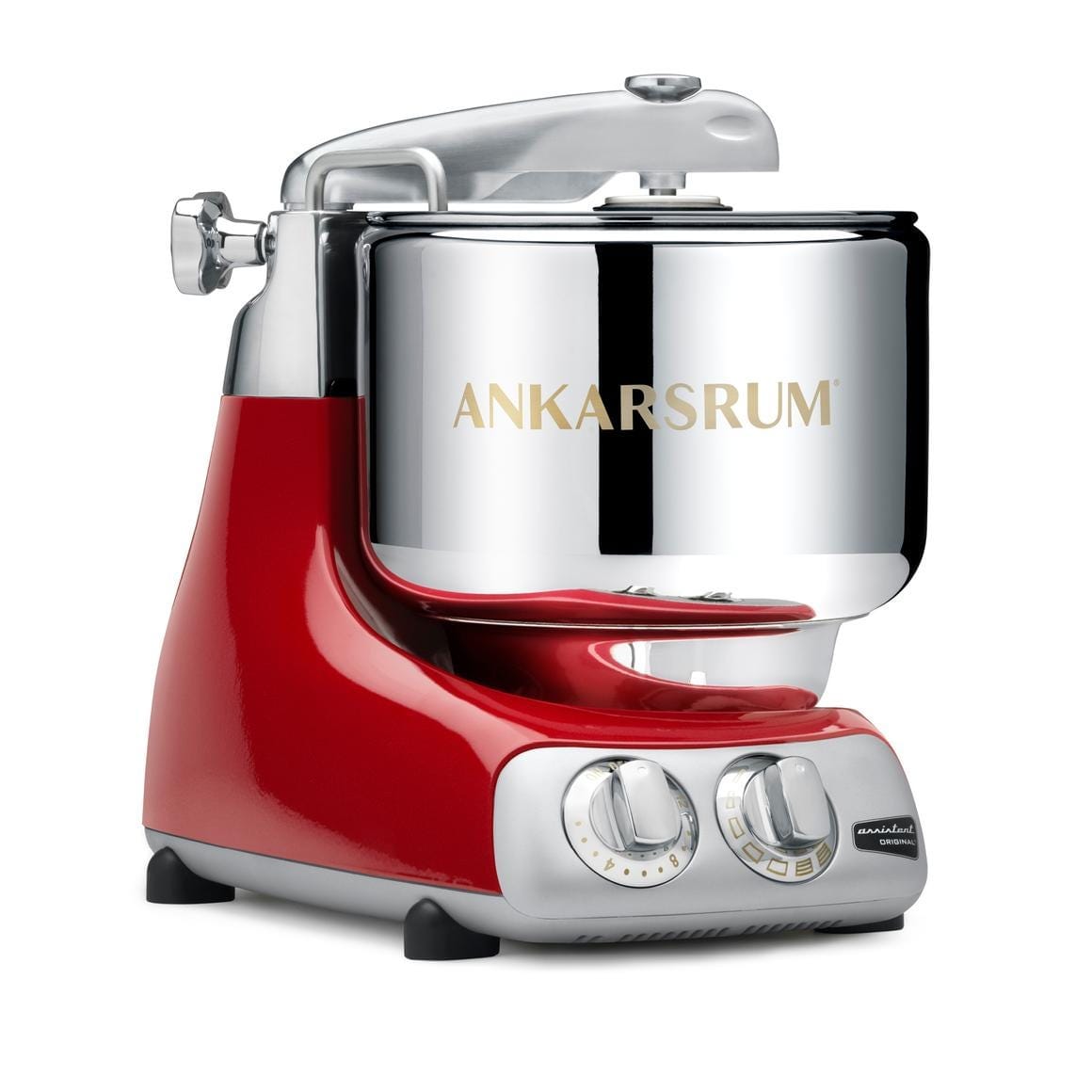
Table of Contents
Before I get into alternatives to KitchenAid stand mixers for bread bakers, I have some updates to the KitchenAid saga first. I’ve heard back from numerous people with pictures or descriptions of their KitchenAid user manuals, some going back a long way, and as it turns out, the “speed 2” recommendation has been in place for a long time, if not since the beginning. (I’m still looking for more archival manuals if you have them!)
But what has changed more recently is the “2-minute rule”: Older manuals do suggest mixing might be complete after 2 minutes (even if that is a dubious proposition, especially on speed 2), but they don’t say to stop after 2 minutes no matter what.
And if you go back far enough, recipes and recommendations look fairly normal. The above pages are from a 1970’s Artisan model, and it recommends mixing for a total of 12 to 15 minutes after all of the ingredients are added to the bowl, which is an entirely reasonable length of time. According to my pal Jess, the shift in quality of KitchenAid mixers happened when Hobart sold the KitchenAid line to the Whirlpool Corporation in 1986. Which sort of tracks with when the changeover in recommended mixing times occurred.
There are alternatives to the KitchenAid for mixing bread dough, though they are slightly more expensive than the most basic KitchenAid models. However, once compared to the higher-end KitchenAid models, the price differences mostly disappear. (Aside from the VEVOR, which I’ve included here because of its low price, I’m restricting the conversation for today to all-purpose mixers rather than also including tabletop spiral mixers, of which there are many.)
The Teddy Varimixer (~$1900)
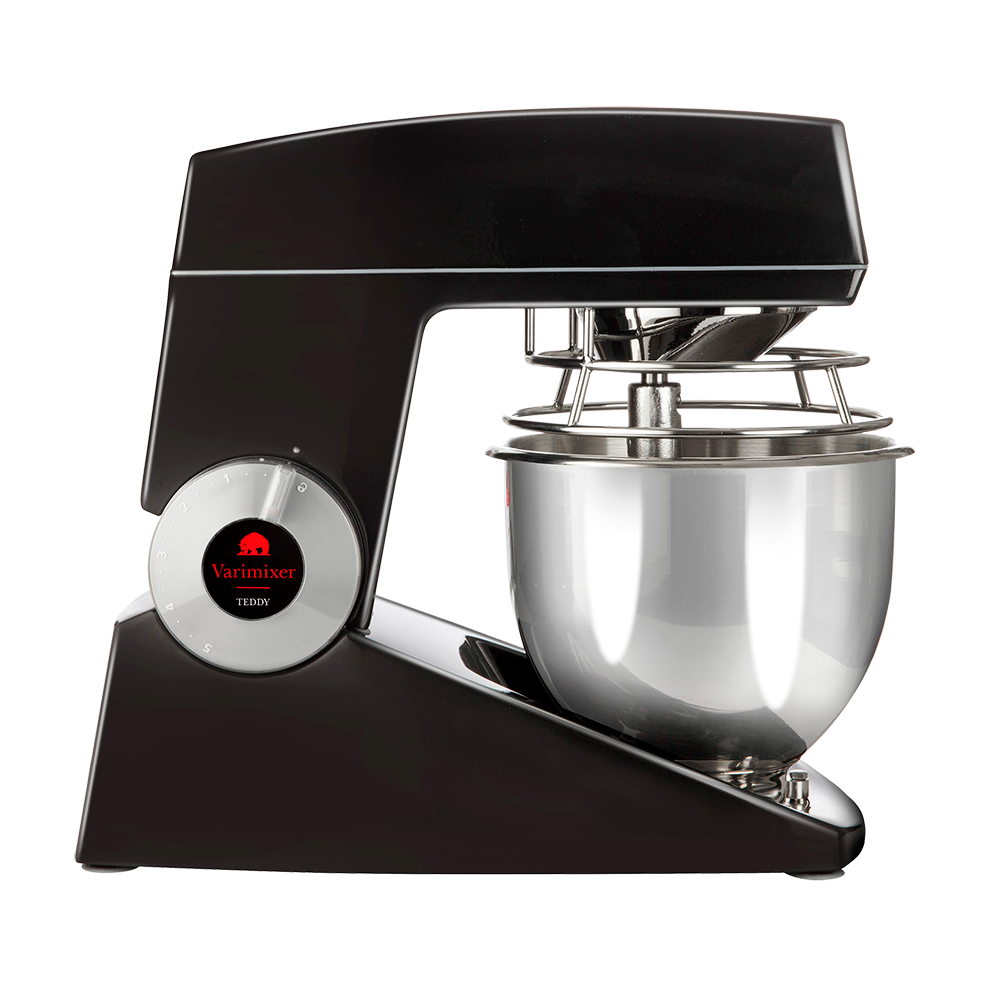
The Teddy Varimixer 5-quart is one that I’d not heard of before, but it came recommended from a friend, who has this to say about it: “It is quieter than KA, Kenwood and Ankarsrum models, shudders much less, and mixes with more torque. I bought it because the company started out doing pro models for large scale ops and only later decided to translate their tech into a consumer model.”
This Danish-made planetary mixer has all the standard attachments—whip, beater, and dough hook—and can do anything any other stand mixer can. It has a 0.4HP motor that can apparently handle 4 to 5 lbs (1800-2300g) of bread dough at one time, depending upon the hydration. There are no apparent restrictions on the speed or length of mixing, as far as I can tell. They aren’t cheap, as US models are priced at about $1900. If anyone else owns or has used a Varimixer, I’d be interested to hear more about your experiences with it.
The Bosch Universal Plus (~$500)
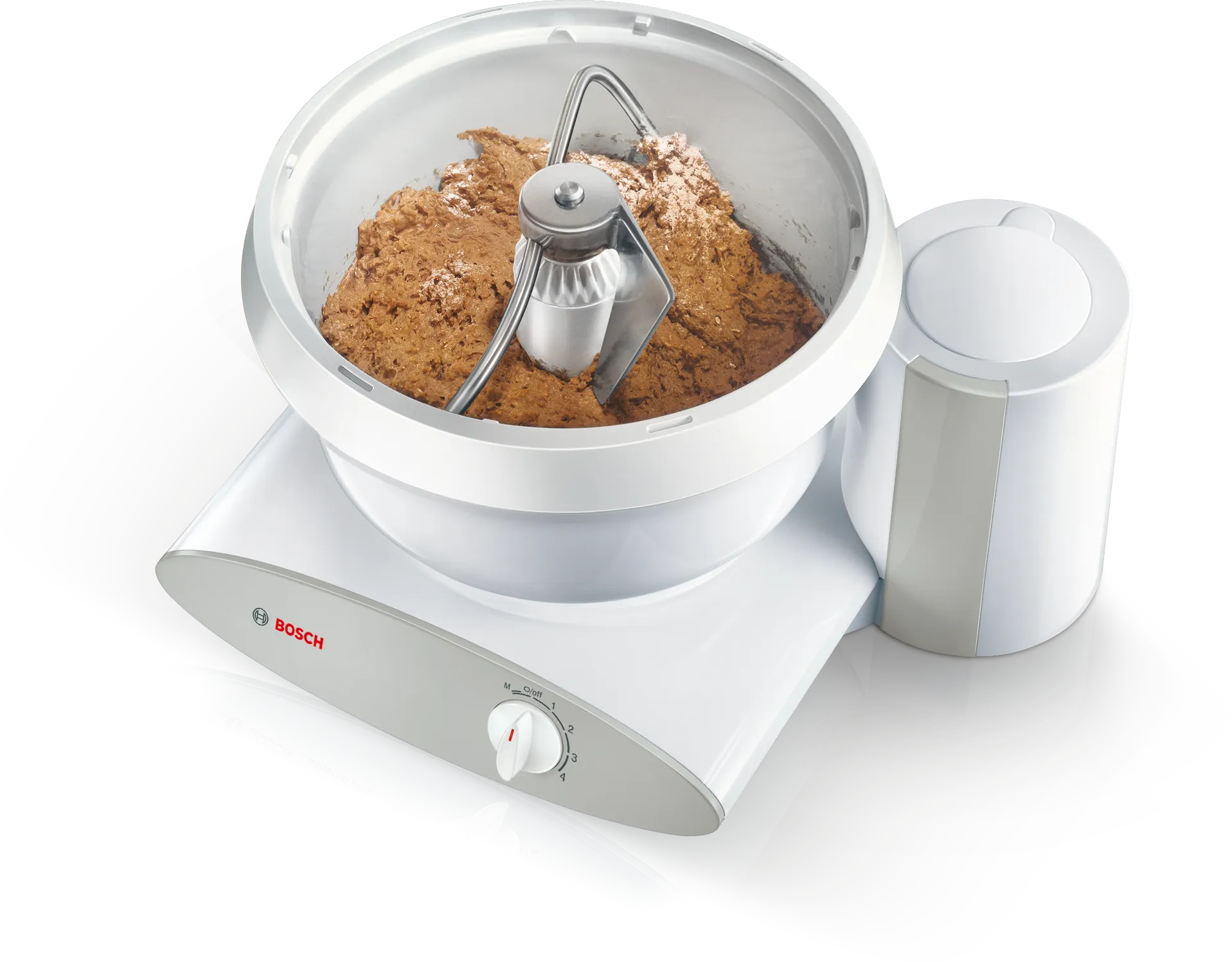
The Bosch Universal Plus is one that has been around awhile and that I have heard good things about over the years, but I have no direct experience with. It has a design unlike most other stand mixers, with a motor in its base and a spinning central shaft that powers the accessories, and an open-bowl design, which makes adding ingredients to the bowl easy. While its motor used to have an 800 watt rating, it was recently downrated to 500 watts, though according to Bosch the underlying specs haven’t actually changed. It has a 6.5-quart bowl and can supposedly handle up to 14 pounds / 6.3 kilos of dough. The Bosch seems to get very good reviews from those who have them, as this Pleasant Hill Grain web page suggests (5 stars from 330 reviewers). (Note: While the Bosch has an unusual design relative to most other stand mixer, interestingly, it has the exact same design as the Ankarsrum, at least when it comes to the Ank’s whip and beater attachments, which almost look like they could be swapped between machines. When it comes to kneading bread, the Ank has another approach altogether.)
This video doesn’t involve bread dough, though it does give a good overview of the Bosch:
The VEVOR Commercial Food Mixer (~$600)
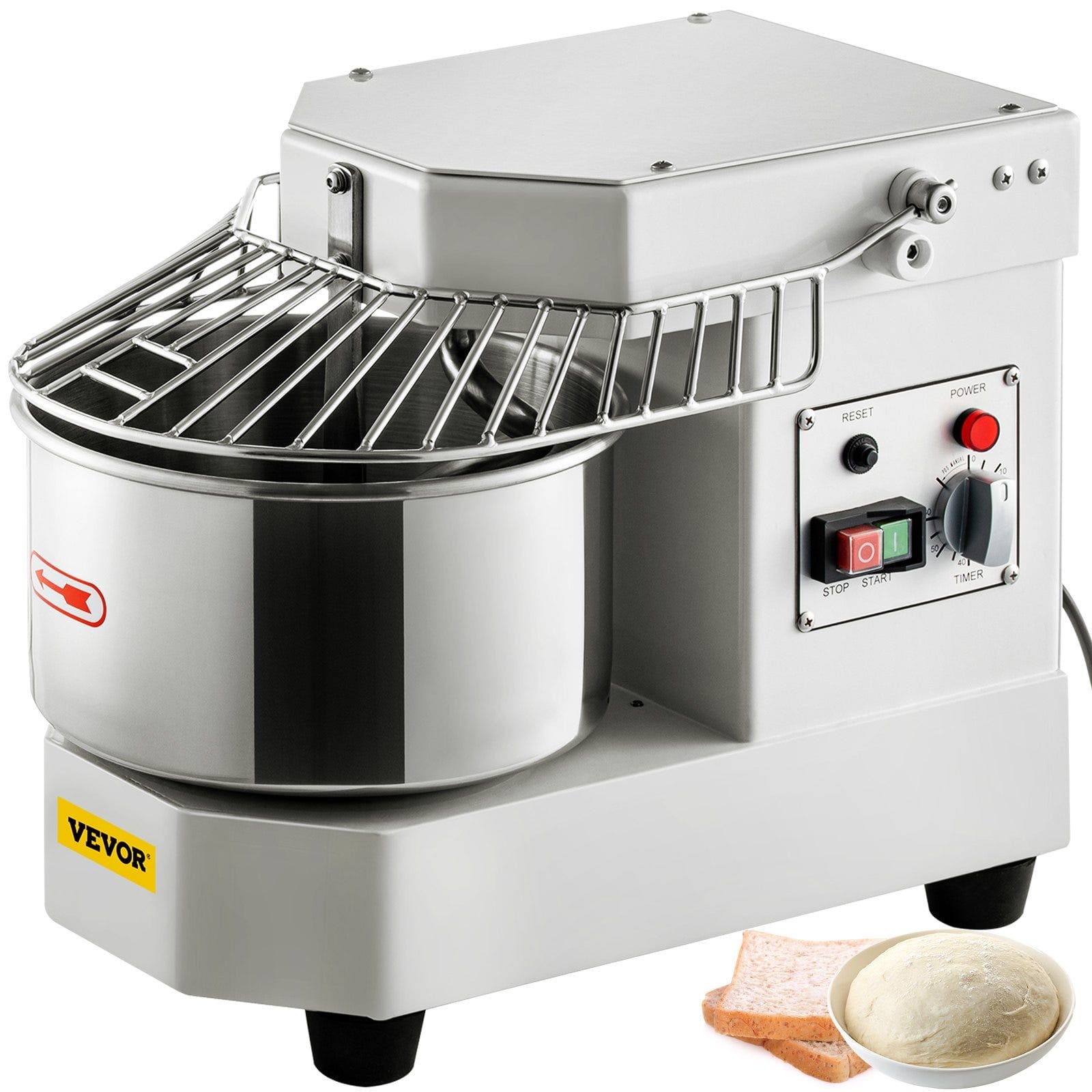
The VEVOR Commercial Food Mixer is unusual in that it is a commercial-grade spiral mixer that is priced similarly to other prosumer stand mixers ($600 or so), which makes it more than half the price of all of the other tabletop spiral mixers out there. It has an 8-liter bowl that can handle up to 3 kilos of dough at one time. I can’t attest to its value, but it comes recommended by Wordloaf reader Allen Cohn, who left this review on the VEVOR website:
This is an excellent value for making bread dough. I wondered if a true offset spiral mixer would do a better job of developing dough than a stand mixer with a dough hook. So far the answer is a solid "yes." I've tested it on
*High-hydration dough--around 85% hydration using the double hydration method
*Low-hydration dough--bagel dough using 14% protein flour and 57% hydration
*Inclusions--one with raisins, one with cooked diced onion
*Highly enriched dough--brioche dough with 40% butter, 10% oil
In all cases the mixer mixed the dough without strain, developed a smooth windowpane quickly and thoroughly, and mixed all ingredients uniformly. It worked on a batch with only 500 g of flour. The specs say it goes down to 250 g, but I would be hesitant to go below 500 g. I suspect that this mixer's "sweet spot" is 1,000 g and above. It would be nice if the mixer had a removeable bowl, reverse, more than one speed. But at this price point it's fine. However...note that the mixer had significant quality control issues: *The safety cage was misadjusted so that I could not raise it. Even I was able to fix this easily. * The mixer had no power when it arrived. It just made a horrible grinding sound. Their technical support (which I could only reach by email, I couldn't reach directly...had to have my messages relayed by a customer service representative, and seemed to not be staffed by people who spoke English as a first language) instructed me to open the machine. Open the machine?! Bakers shouldn't have to do that! Once inside even I could see that the belt that transfers power from the motor to the gears was loose. In fact, it was at the very loosest setting. That means that NO ONE adjusted this before it went out to the customer. It was a bit challenging for me to fix this, but I was able to in time. And since then...it has worked flawlessly. I am not anticipating any additional problems. Also note that the mixer arrived about 5 days later than the website listed. But that's not a huge problem. Finally note that the listed price has been raised by $75 (15%) in just the last 4 weeks. So watch the price on this item. It may go up or down. And watch for coupon codes (using something like the Honey browser add-on). I waited until a 10% off coupon briefly activated.
The Wilfa Probaker (~$1500)
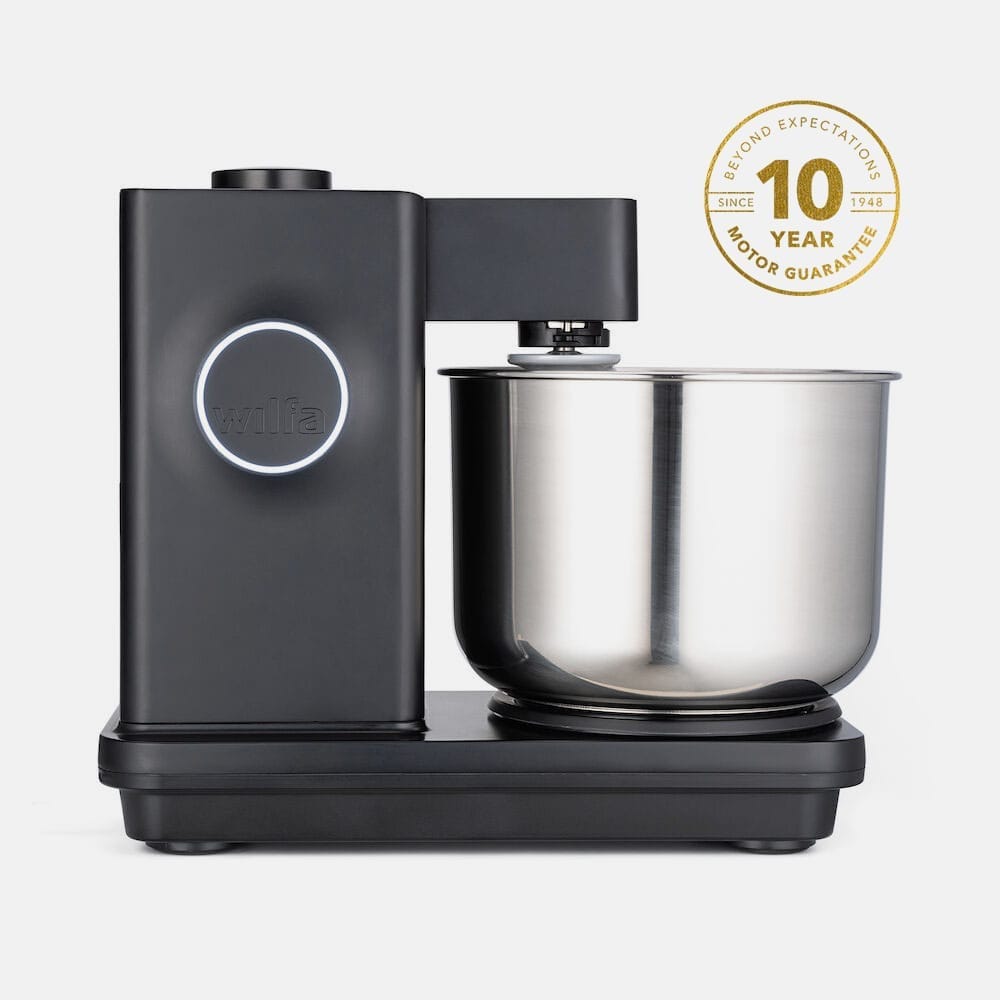
The Danish-made Wilfa Probaker is not currently available in North America, though it is one I am eagerly awaiting. It is unusual in that it is a tilt-head, rotating-bowl spiral mixer that also uses the standard attachments of other stand mixers, namely a beater and a whip, which makes it in theory the most versatile consumer spiral mixer available. It has a 7-liter capacity and can handle up to 5 kilos of dough at one time. Here’s what GBBO winner and author Edd Kimber has to say about the Probaker on his newsletter, The Boy Who Bakes:
Because I want the bread to be as hands off as possible I also like to fully mix the dough using my Wilfa Probaker, instead of the commonly used stretch and fold method. The reasons for this are two-fold. Firstly the Wilfa Probaker is truly excellent at kneading dough, I’ve never used a domestic mixer that kneads bread doughs better. I can thrown everything into the mixer and leave it for 10 minutes and get on with something else (this normally just means making my morning coffee and watching tiktoks).
Here’s a short video of the Probaker in action:
The Ankarsrum

I’ve saved the Ankarsrum (aka the “Ank”) for last because it is the one KitchenAid alternative that I have owned and used myself for several years now. (I wrote about the Ankarsrum for Epicurious awhile back.) It has a 7-liter bowl and a 750watt1 motor that can handle up to 4500g / 10 pounds of dough comfortably. Like the Bosch, it has a unique mechanism of action—in this case, the attachments stay more or less fixed, while the bowl rotates; kneading is achieved by the force of the dough against the attachments. The attachments are held in place by an arm that swings freely from side to side within the bowl; the minimum distance of the arm from the side of the bowl can be adjusted by tightening a thumbscrew at the back of it.
The Ank also has two separate sets of kneading attachments, the roller and the hook, each of which works slightly differently; both work in tandem with the dough scraper, which keeps the dough from getting caught up on the sides of the bowl. One of the challenges of working with an Ank is knowing which tool to use; I find that the roller works best with softer, higher-hydration doughs, while the hook is meant to tackle stiff doughs. (I will admit that, even after years of using an Ank, I’m still not 100% confident I know which to use under different circumstances. And I know there are some people that knead doughs using one or the other tool exclusively.)

The “dough roller” is a grooved cylinder that spins freely, compressing the dough against the sides of the bowl; it’s a relatively gentle set of motions, but effective nonetheless. The roller tends to be more hands-off than the hook, though it is often necessary to adjust the roller-to-bowl distance during mixing to ensure that the ball continues to move freely around the bowl (if the dough is too stiff, it won’t enter the space between the roller and bowl without enough room). As it develops strength, the minimum distance often needs to be increased to keep things moving, or to prevent the arm from bouncing too violently from side-to-side.
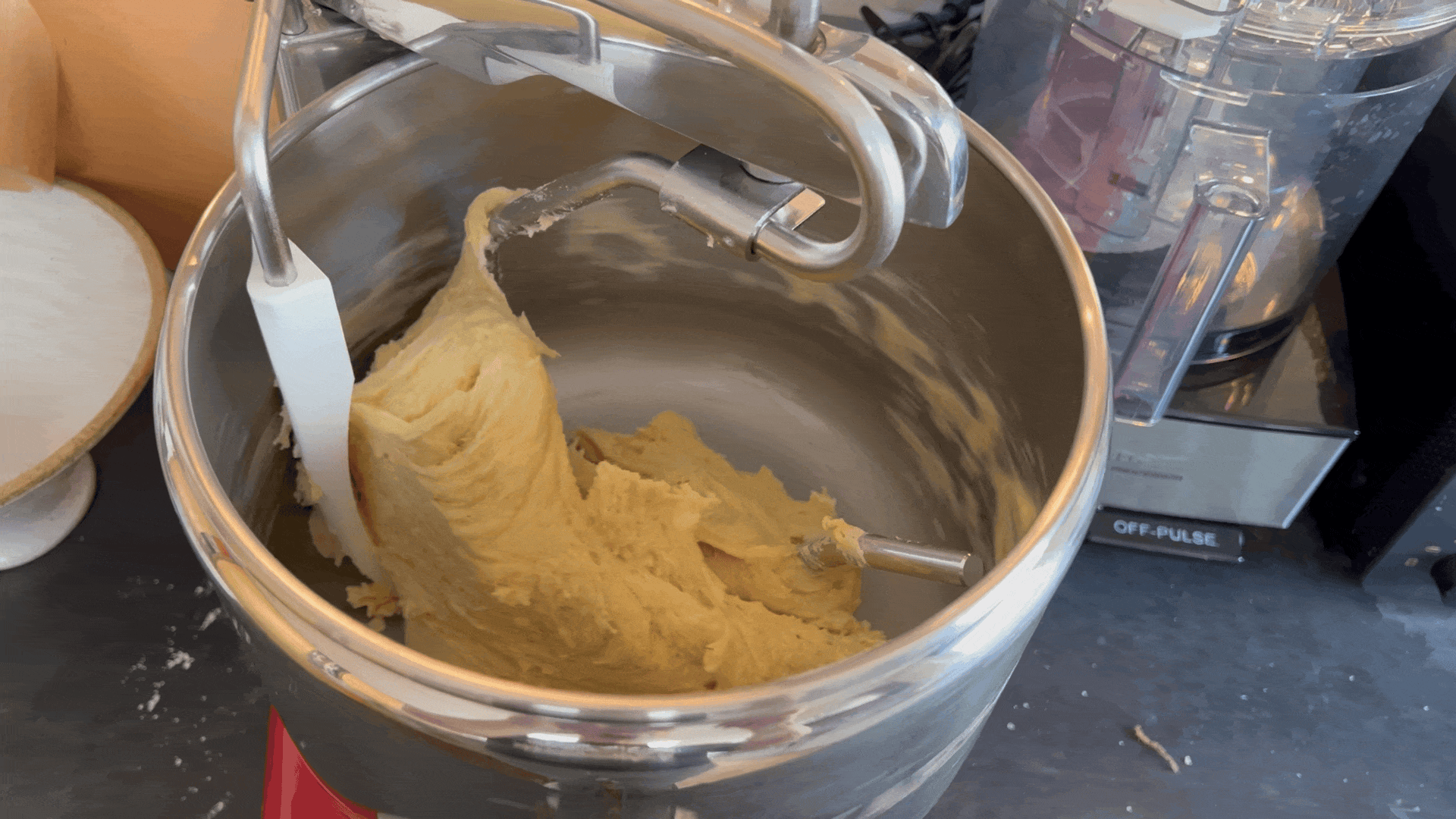
The hook is stationary, aside from its movement from side-to-side in the bowl; it works by giving something for the dough to catch on and twist around during mixing, pulling and stretching it like taffy. The hook often requires a bit more babysitting than the roller, because stiff or strong doughs can start to ride up the back of it, requiring it be pushed down or released completely before it begins to get caught up on the arm above.
Because the bowl is so large, the Ank does struggle a little when making small-batch recipes—usually this just means needing to move the arm around by hand to make sure ingredients get evenly combined. (One fun detail about the Ank is that because there is so little motion happening during mixing, you can safely reach into the bowl or move the arm around to adjust things without risk of injury.) You can also move the scraper around by hand to “chop” the dough against the bowl for more efficient mixing.
I tend to mix on two speeds, the lowest for mixing and “low” speed kneading, and 1/3 to 1/2 way along the dial for “medium.”
The Ankarsrum is also unique among stand mixers for having a built-in timer, which makes mixing for specific intervals easy-peasy.
While an Ank can work entirely hands-off, I’d say it maybe needs a bit more babysitting than a planetary mixer, particularly during early stages of mixing; once things get moving uniformly, it can be left alone for the most part. To me, its power and capacity more than make up for this slight downside. (Unlike KitchenAids, however, there is no need to make sure the machine won’t wobble its way across the counter and onto the floor, even when working with the stiffest of doughs.)

Other stand mixer jobs are done with a separate set of bowl and tools; in this case, as I mentioned above, the mechanism is more-or-less identical to that of the Bosch. After removing the bowl, you insert a plastic shaft into the motor and then set the donut-shaped bowl (made of clear plastic or, as a separate purchase, stainless steel) over it. Wire-whisk beaters and "paddles” (which are also made of stiff wire loops) attach to the top of the shaft and rotate around the inside of the bowl. While the 3.5 liter bowl isn’t as capacious as the mixing bowl, the tools work flawlessly, whether whipping cream or eggs or beating butter and sugar together. (If, as with many cookie and cake recipes, the process does not require high-speed incorporation of air into the batter or dough, you can instead use the scraper/roller combination to do the work, which gives you a full 7 liters of space to work with.)
I know that lots of folks here have Ankarsrums, some because of my recommendation of the machine over the years here. I’d love to hear more about your experience with them and/or your questions about how best to use one, so I started a chat thread. Feel free to also use it to share your thoughts on other KitchenAid alternatives too:
European models of the Ank are rated at 1500 watts, while American models are only half that. Still, even US models are plenty powerful enough to do the job. ↩
wordloaf Newsletter
Join the newsletter to receive the latest updates in your inbox.




